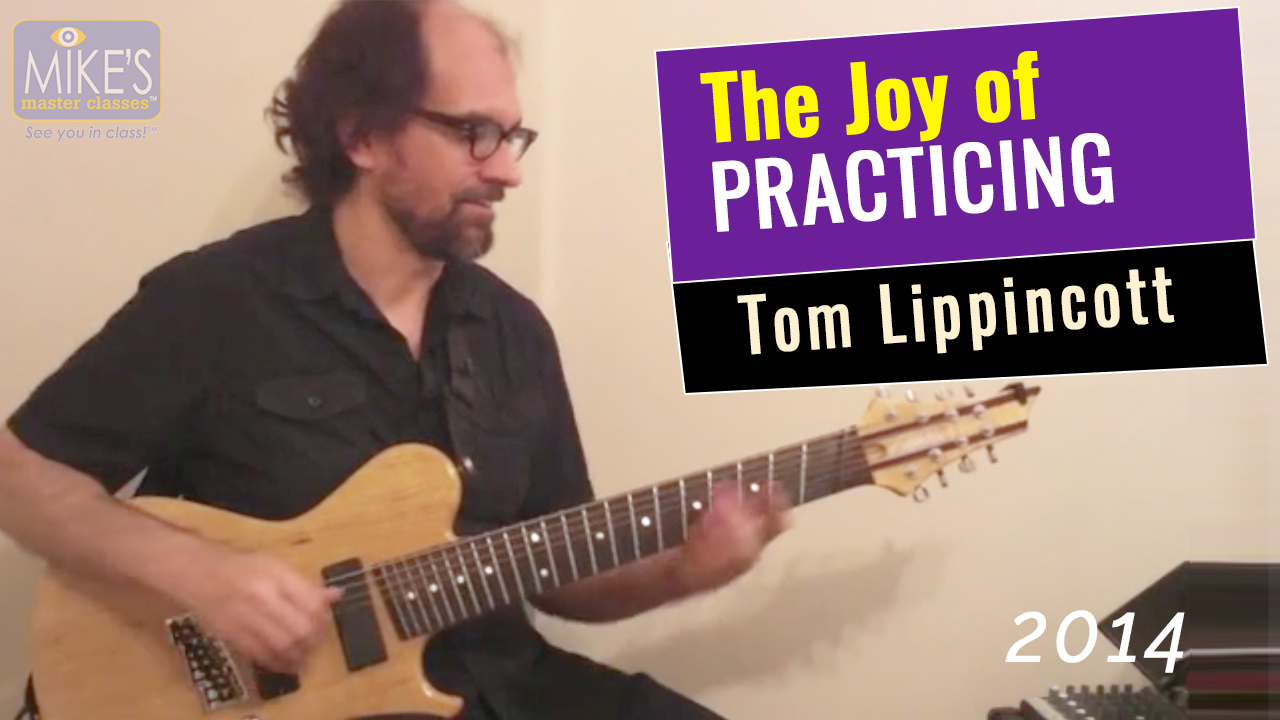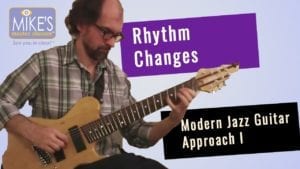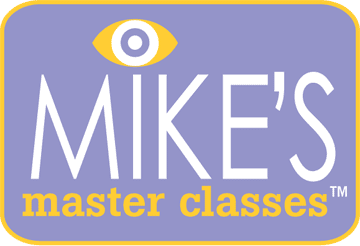Description
Description
The Joy of Practicing Class Content | Tom Lippincott
“Practice makes perfect,” so the saying goes. However, many musicians view practice as a necessary but tedious and grueling task that’s full of drudgery. Or even worse, some musicians approach practicing with a sense of fearful urgency, feeling overwhelmed by the amount of work that they must complete in order to reach their goal of being a “great” player.
These same people are often uncertain how to organize their practice time, not sure what they should practice, or how much time they should to devote to each subject. Even accomplished musicians can sometimes experience a lack of inspiration or feel unsure about how to structure a practice session.
If any of this sounds familiar, then this class can help get your practicing back on track and assist you with achieving more fulfillment from your guitar practice sessions.
Practicing should be approached with joyful anticipation and savored instead of undertaken with reluctance or dread.
The Joy of Practicing explores ideas and recommendations with an eye toward making practice enjoyable and productive rather than tiresome and dull. The class covers a suggested practice routine broken down into nine categories with examples from each.
While the list of items presented may not be perfect for everyone, students can use the guide as a starting point to build a custom practice plan tailored specifically for their own needs and goals.
The Joy of Practicing covers:
- Ideas for making practice sessions more fun and approaching music and musical development with a positive attitude
- Breakdown of three types of musicians with a discussion of the differences in goals for each
- Discussion of technique practice with examples of right and left hand exercises, as well as scale and chord exercises to improve technical proficiency
- Note-recognition exercises for help with learning note names on the neck, as well as reading notation and rhythmic notation reading exercises
- Devoting separate practice time to rhythmic development, with multiple examples
- Discussion of listening to music, both “actively” and “passively,” and its importance in a musician’s development
- Step-by-step breakdown of suggested routine for learning a new tune accurately and thoroughly
- Concise but complete list of what to practice to develop harmony, chords, and comping, with multiple examples
- Exploration of single-note improvisation with examples of applying concepts of voice leading, guide tones, approach and target notes, chord tone versus chord scale approach, development of intervallic patterns, reharmonization techniques, and motivic development
- Discussion of composition and its importance to musical development, with suggestions and tips
- Running time: 126 minutes
- Includes 25 pages of written examples and exercises
- All musical examples from the video are provided in music notation, tablature, and chord grid form.
- Each example performance in the video is titled and numbered for easy navigation.
- MP3 backing tracks for written examples and solos
| Full Class + Download | |||
| The Joy of Practicing | 02:07:00 | ||
| INTRODUCTION | |||
| Intro Song | 00:01:40 | ||
| Introduction & About My Guitar (Tuning and Fanned Frets) | 00:02:01 | ||
| Defining Practice | 00:01:48 | ||
| Goals For the Professional | 00:01:42 | ||
| Goals For the Semi-Professional | 00:01:00 | ||
| Goals For the Hobbyist | 00:00:32 | ||
| The Surprisingly Most Successful Way To Practice | 00:00:52 | ||
| How Kenny Werner Practices | 00:00:51 | ||
| Practicing Guitar, Video Games, and Life | 00:02:59 | ||
| Stop Trying To Get Better | 00:00:42 | ||
| My Practice List and Practice Time Organisation | 00:02:23 | ||
| One Small Subject In Great Detail | 00:01:53 | ||
| The Lifetime Master List and The Short Term Master List | 00:01:30 | ||
| THE 8 AREAS TO COVER | |||
| 1 TECHNIQUE | |||
| Staying Relaxed | 00:01:24 | ||
| Slow Scales and Meditation | 00:02:01 | ||
| Warming Up Like Scott Tennant | 00:00:31 | ||
| Ex 1 – Left Hand Slurs and Variations | 00:01:11 | ||
| Ex 2 – Finger Independence | 00:02:13 | ||
| Giuliani Exercises | 00:01:50 | ||
| Ex 3 – Giuliani Right Hand Study | 00:00:39 | ||
| 10 Three Octave Scales For Technique Practice – Ex 4A to 4J | 00:03:37 | ||
| Chordal Things – Ex 5 and Ex 6 | 00:02:01 | ||
| 2 NOTE RECOGNITION AND READING | |||
| Why Learn to Read | 00:01:28 | ||
| Ex 1 – Note Row | 00:02:03 | ||
| Ex 2 – Note Row on High E String | 00:01:32 | ||
| Ex 2a – Note Row in 5th Position | 00:01:54 | ||
| Ex 3 – Eighth Note Reading | 00:13:11 | ||
| Ex 3b Sixteenth Note Reading | 00:02:30 | ||
| 3 RHYTHM | |||
| Intro to Rhythm Practice | 00:00:39 | ||
| Ex 1 – Eighth Note in 4/4 missing h in eighth | 00:01:08 | ||
| Variations with Improvisation | 00:01:50 | ||
| Click on the and of 2 | 00:01:49 | ||
| Ex 2 – 8th Note Triplets | 00:02:35 | ||
| 4 EAR TRAINING | |||
| Ear Training Exercises 1 to 4 | 00:02:08 | ||
| Ear Training Exercises 5 to 7 | 00:02:10 | ||
| 5 LISTENING AND TRANSCRIPTION | |||
| The Importance of Listening | 00:02:30 | ||
| Active Listening | 00:00:55 | ||
| Two Approaches to Transcription | 00:03:09 | ||
| Transcribe! Software Tutorial | 00:11:23 | ||
| 6 REPERTOIRE | |||
| The Importance of Repertoire | 00:01:46 | ||
| Repertoire Ex 1 to 4 | 00:02:48 | ||
| Repertoire Ex 5 and 6 | 00:02:12 | ||
| Repertoire Ex 7 and 8 | 00:01:34 | ||
| Repertoire Ex 9 – Alternate Changes and Color Tones | 00:01:48 | ||
| Repertoire Ex 10 – Chord Melody | 00:01:24 | ||
| Repertoire List Guidelines | 00:00:34 | ||
| 7 HARMONY, CHORDS, AND COMPING | |||
| A Systematic Approach to Harmony | 00:02:29 | ||
| Harmony Ex 1 to 5 | 00:05:36 | ||
| Harmony Ex 6 to 10 | 00:07:30 | ||
| 8 IMPROVISATION | |||
| Improvisation Ex 1 and 2 | 00:02:07 | ||
| Improvisation Ex 3 and 4 | 00:01:34 | ||
| Improvisation Ex 5 to 7A | 00:03:20 | ||
| Improvisation Ex 8 | 00:02:06 | ||
| Improvisation Ex 9 and 10 | 00:03:35 | ||
| Improvisation Ex 11 and 12 | 00:03:32 | ||
| 9 COMPOSITION | |||
| Tom’s Personal Approach to Composition | 00:04:16 | ||
| CONCLUSION | |||
| Closing Thoughts and Outro Performance | 00:02:03 | ||






